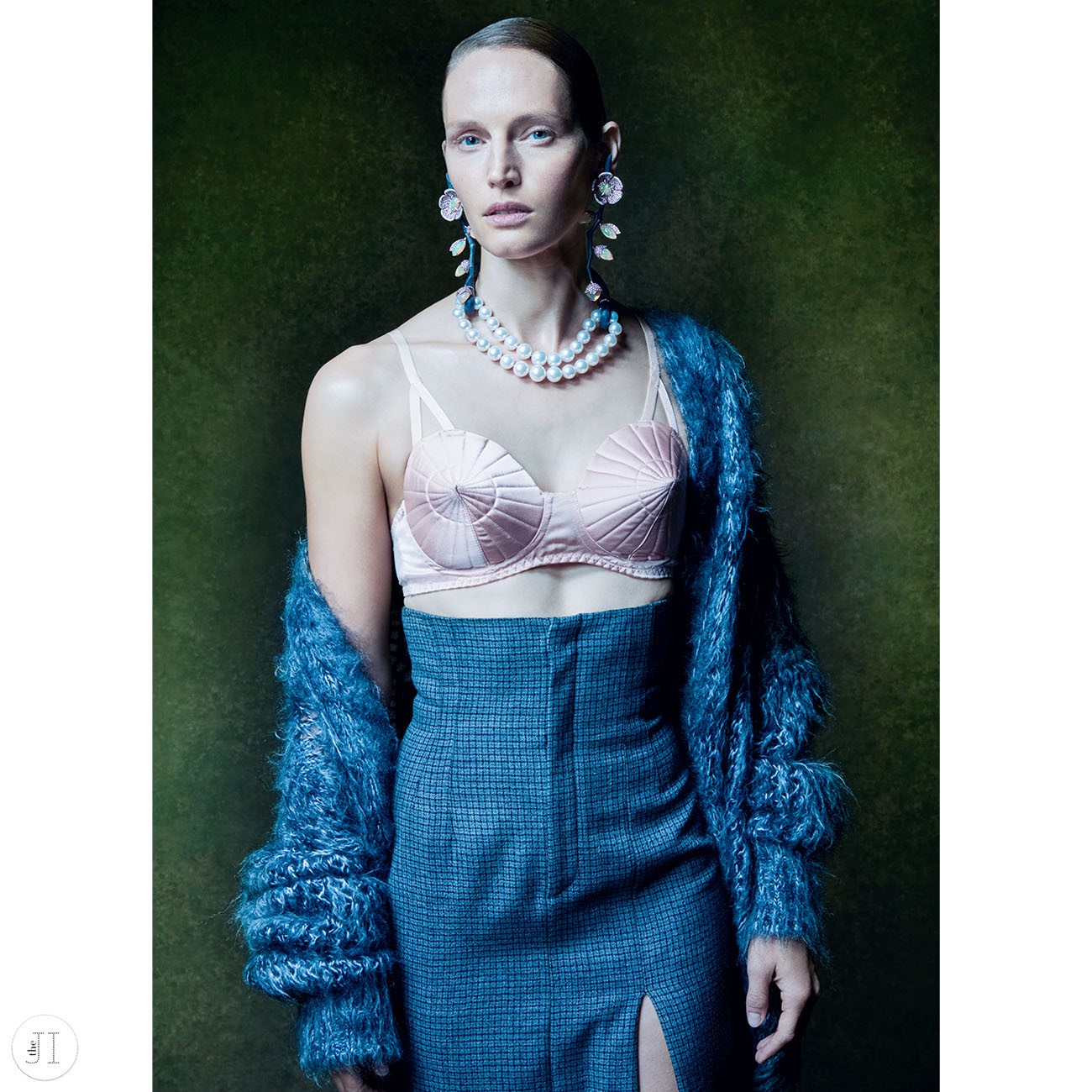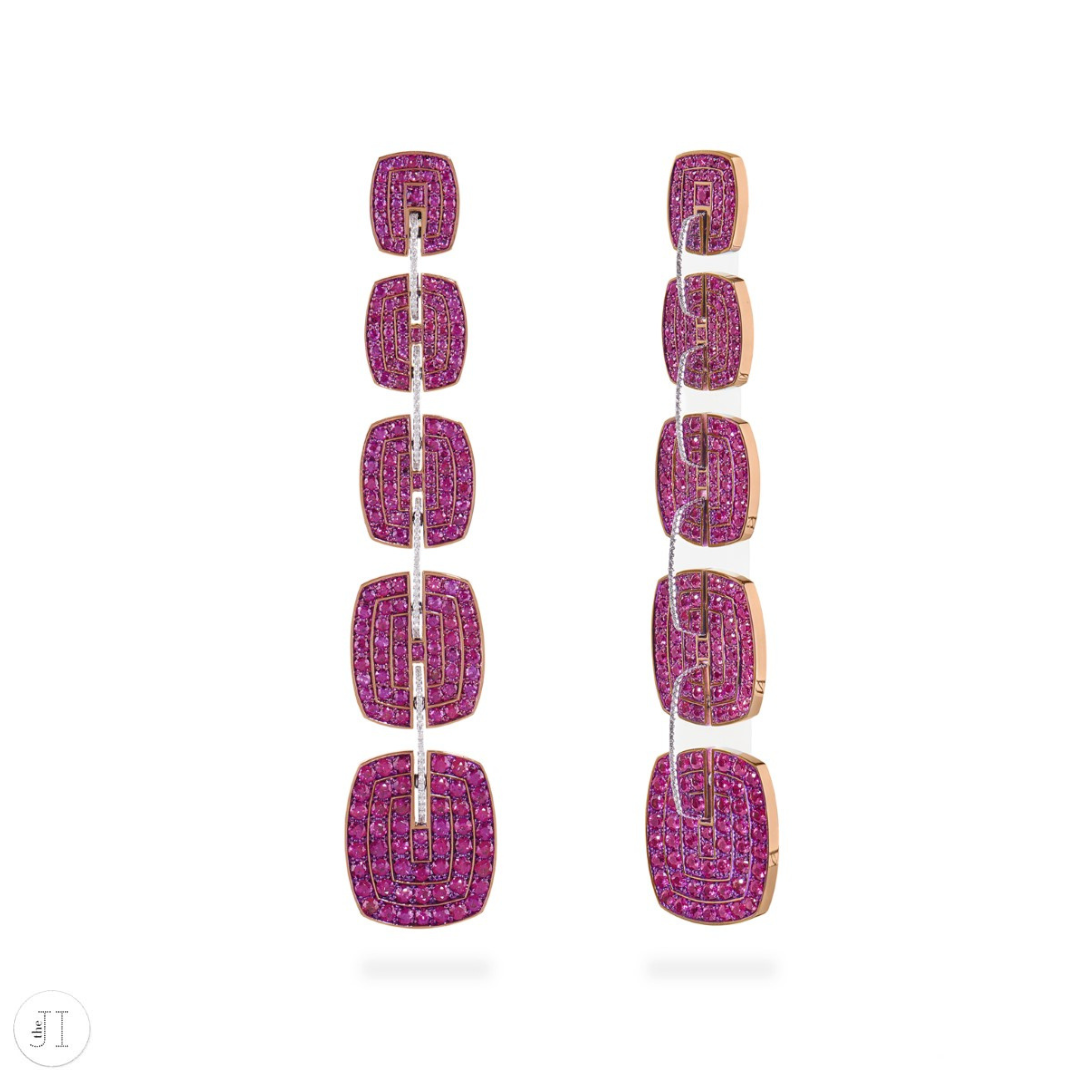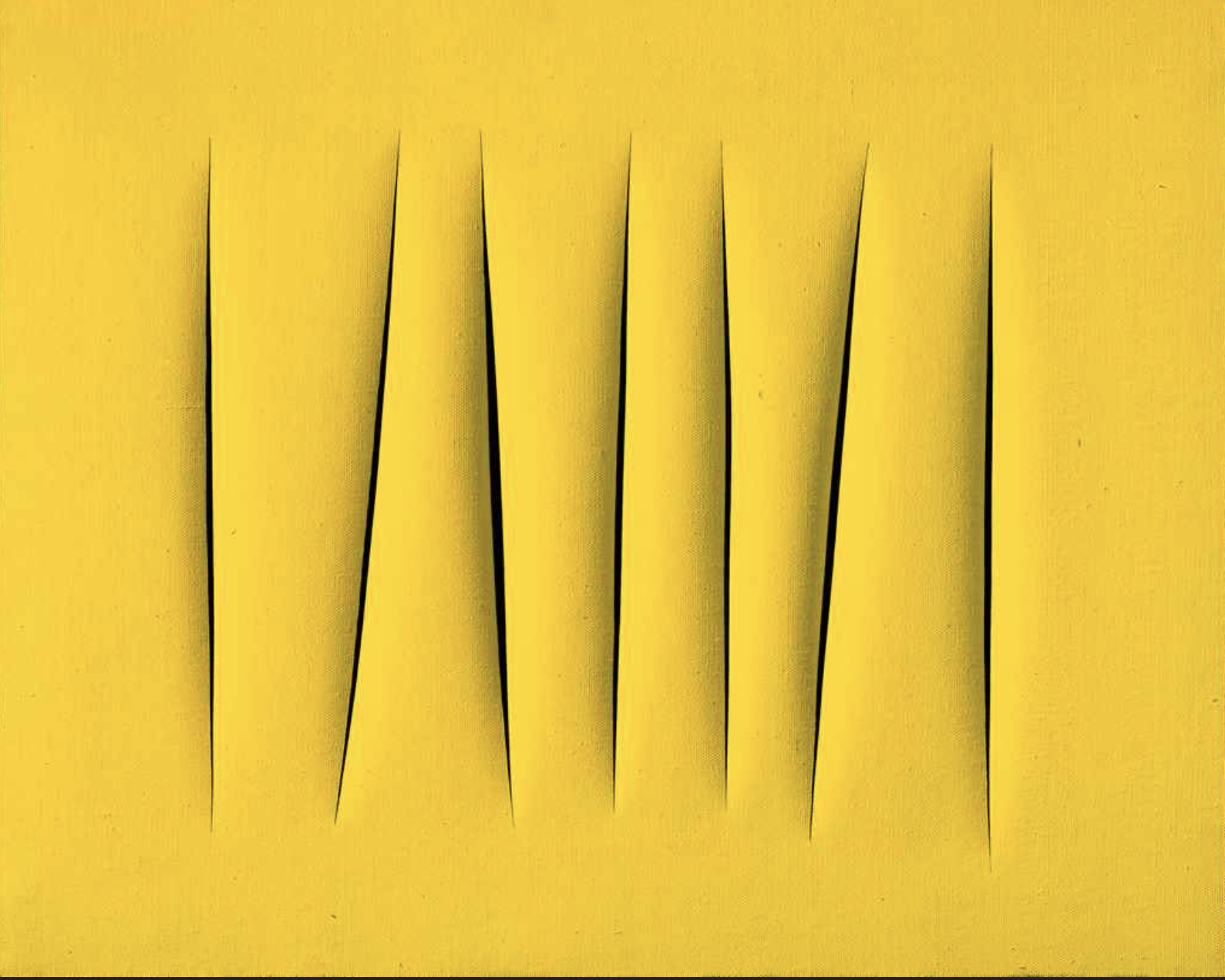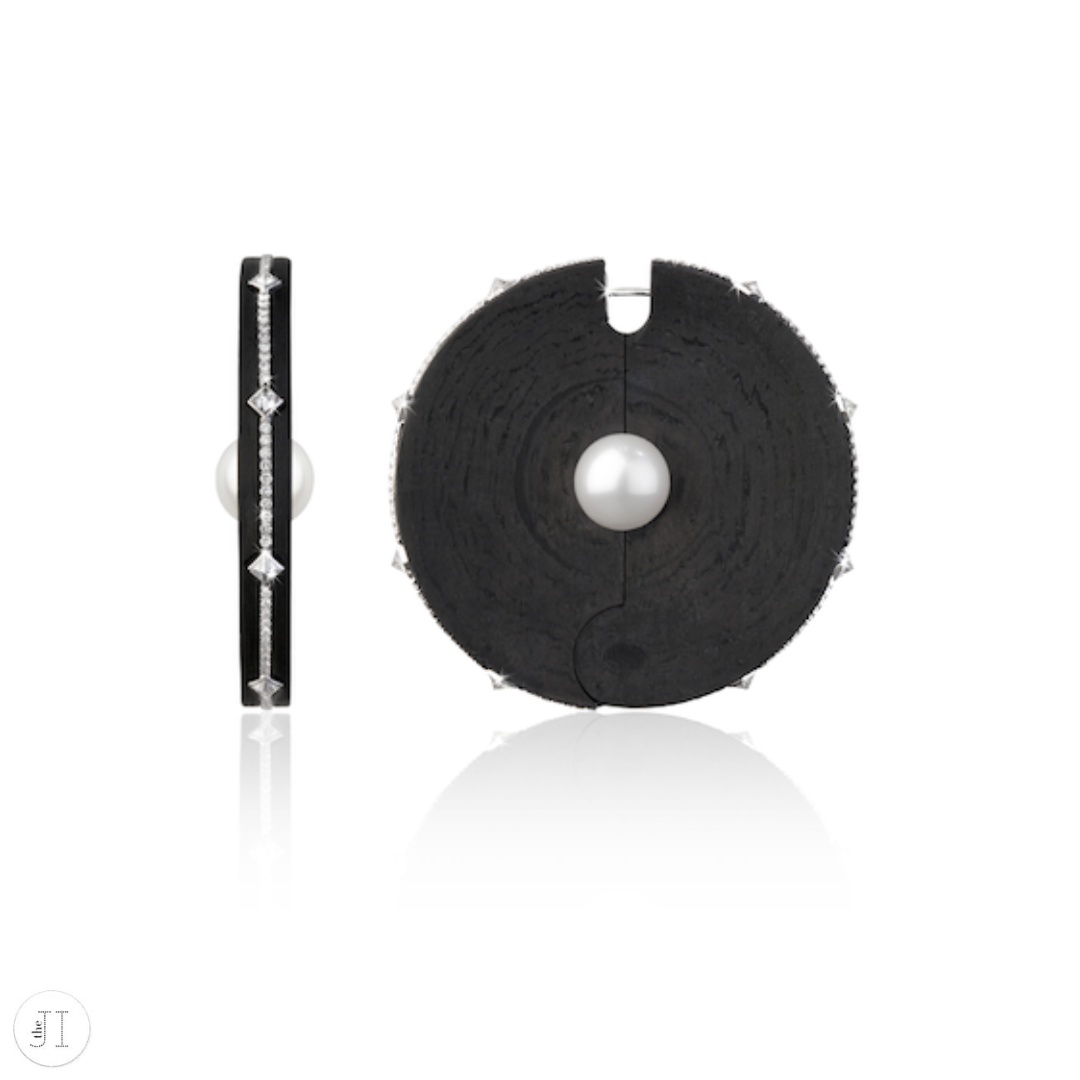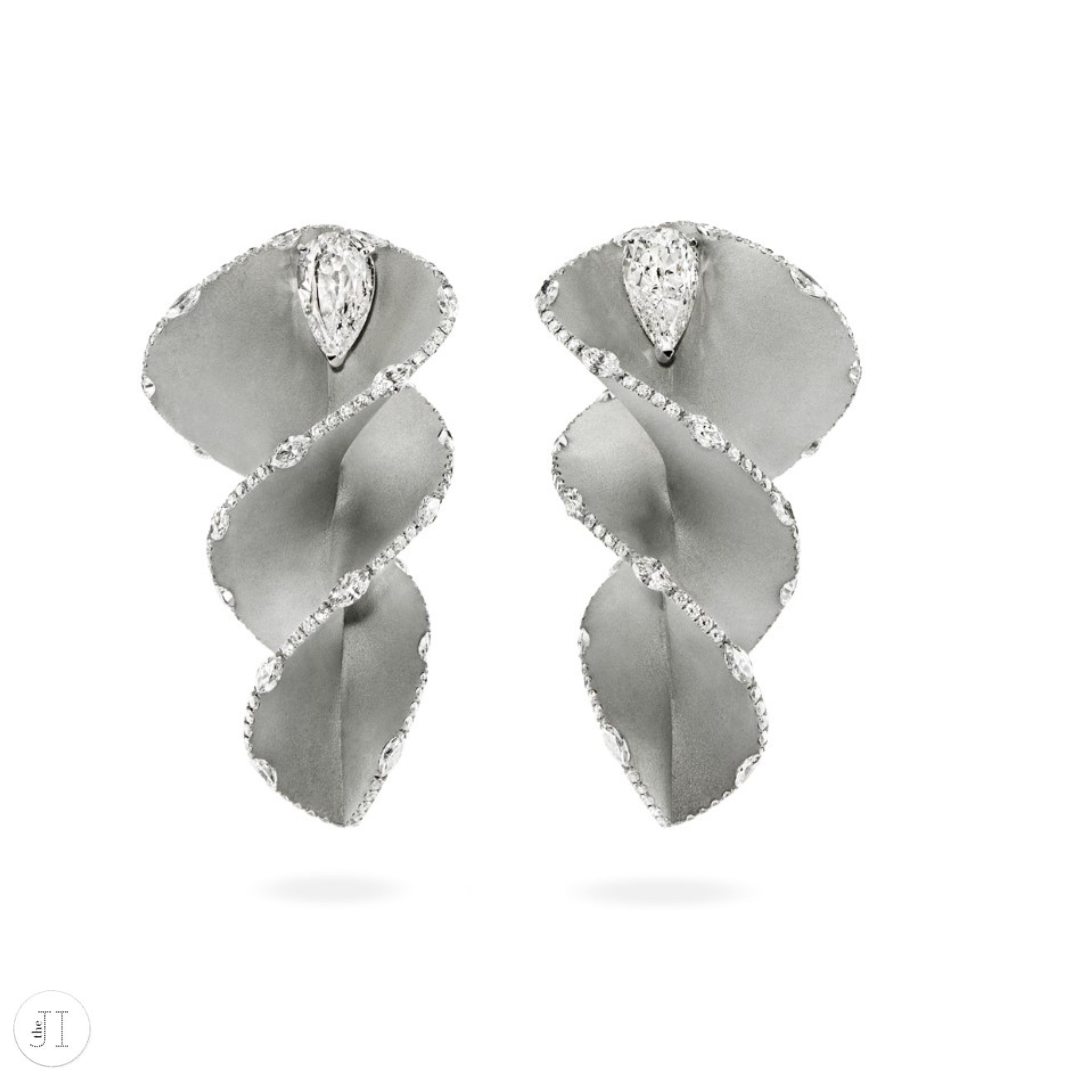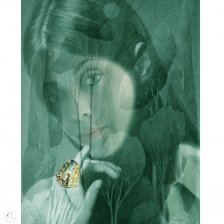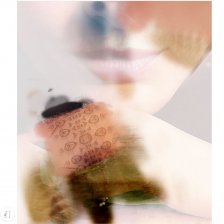FABIO SALINI: THE MAN, THE ARTIST, THE PHILOSOPHER
My jewelry is screaming a message: "Please stop making flowers!"
Fabio Salini in an interview to The Jewelry Icon
In the hallowed halls of high jewelry, where ancient crafting techniques meet contemporary sensibilities, Fabio Salini stands as a defiant figure of modernist evolution. The Roman jeweler transcends his role, assuming the mantles of artist, philosopher and philanthropist, expertly blending traditional motifs with futuristic designs.
Born in Rome in 1973, Salini started his career in architecture, only to be irresistibly drawn to jewelry design. A change of career paths led him to construct not buildings, but wearable artefacts, bringing to the body his unique architectural insights.
Fabio Salini's approach to jewelry is as diverse as the city of Rome itself. He isn't limited to the usual gems and precious metals. His palette incorporates the unconventional, industrial elements and natural objects, such as carbon fiber, bamboo, leather, even straw, each adding a unique dimension to his creations.
If you don’t change the rules, if you don’t dare, you don’t bring anything new into the world.
Fabio Salini in an interview to Vogue
Salini's work has been showcased globally, signalling his transformative contributions to high jewelry.
The following pages offer an intimate glimpse into Fabio Salini's world. In the interview, we discussed with the maestro his inspirations, his creative process, and his philosophical stance on the role of jewelry in our lives.
Prepare to delve into the universe of Fabio Salini – a journey that promises to challenge conventional perspectives and deepen your appreciation of contemporary jewelry.
The odyssey of style: a unique artistic journey
Before taking the path of self-discovery and innovation, Salini spent two years with Cartier, an epitome of minimalistic elegance, and seven years at Bulgari, a brand celebrated for its audacious, industrial-inspired design.
Navigating between these seemingly contrasting aesthetics, Salini started searching for his own distinctive style. But with the excitement of this journey came an equally challenging feat – to create a style that bore his own signature, transcending the influence of these jewelry titans.
I assure you that there's no academy where you could go to learn to be an artist or to make a work of art.
Lucio Fontana, from Lucio Fontana: Between Utopia and Kitsch by Anthony White
Fabio likened this process of sculpting his singular artistic identity to an unfolding series of subtle revolutions, redefining conventions, meticulously integrating classical elements with unapologetic innovation, one daring iteration at a time.
Every element Salini has introduced to his creations breathes symbolism and meaning into his work. A case in point is the innovative use of carbon fibre, a material borrowed from the masculine world of engineering, as a tribute to the resilience of the modern woman.
Femininity, he asserts, doesn't demand a garland of flowers. Jewelry reflect individuality, a silent whisper of self-expression rather than a noisy proclamation of stereotypes.
Tradition and innovation
Fabio Salini's creations challenge the conventions of jewelry-making.
Once valued for its inherent worth and status, gold in Salini's design becomes a purely aesthetic element. Its long-held structural importance is replaced by modern, industrially-sourced materials such as carbon fiber – a departure evident even in the small details of his jewelry such as hinges, traditionally crafted from gold or other precious metals.
This is no trivial experiment in materials, but a profound question posed by Salini to his audience: What truly constitutes the value of jewelry? Is it measured by the luster of gold or the sparkle of precious stones? Or does its worth go beyond the material, lying instead in the stories it tells, the emotions it provokes?
I have made a hole in the canvas in order to leave behind me the old pictorial formulae, the painting and the traditional view of art, and I have undertaken cosmic art.
Lucio Fontana, from Postwar Italian Art History Today: Untying 'the Knot' by Sharon Hecker and Marin R. Sullivan
In his Spatialism movement, Lucio Fontana – the Argentinian-Italian artist known for his radical approach to art – altered the sanctity of a canvas by creating incisions that imparted depth beyond the reach of mere paint, Salini redefines the normative constructs of his craft. Both artists, each in their unique way, ask us to question the customary and to see value where it's not traditionally sought.
Reflections of reality and digging deeper
During our interview, Fabio showed us his Mirror Earrings, a reflection of his artistic philosophy. "I want people to reflect on the real value of jewelry," he told us, holding the earrings up to the light. "The mirror is the door of imagination. It's a tool for viewing things differently."
His design encourages active engagement from the observer, a cerebral invitation to ponder over the unexpected form and unanticipated volume of these earrings.
I want people to reflect on the real value of jewelry. The mirror is the door of imagination, mirror of your soul – an instrument to see things in a different way.
Fabio Salini in an interview to The Jewelry Icon
Next, he revealed another expressive piece: the Spiral Earrings.
At first glance, they might be mistaken for drills, a deliberate nod to a traditionally masculine tool. The spiral, an age-old symbol connecting the earthly to the divine, hints at a deeper purpose. Salini explains his concept: the world should be less superficial, and by drilling deep within us, we discover our essential selves, just as we drill into the earth to find life-sustaining water.
At the pinnacle of these symbolic earrings, a solitary diamond sparkles – a drop of precious water, found only after diligent searching.
With each creation, Fabio implores us to delve beyond the surface, to seek out the significance that lies within the apparent. "You need to read the meaning of things," he insists, "not just take them superficially."
Jewelry as a form of art
His approach mirrors the spirit of modern art where value is derived not from tangible resources, but from an idea – an ephemeral yet powerful concept that lays the cornerstone of the piece.
In his quiet – and beautiful – rebellion, Fabio seeks to shift the paradigm of how we gauge a jewel's worth: to redefine the standards, where a piece's value is linked not to its glittering gold or dazzling diamonds, but to the emotions it arouses and the stories it tells.
I want to give my work a more noble destination, which is not only for the wealthy, the happy few. I want to be useful for less well-off people.
Fabio Salini in an interview to The Jewelry Icon
Art, in its purest form, is an inter-dimensional gateway, a rule-breaker. And Fabio challenges: why should jewelry not follow suit?
Each piece is a journey, a discourse that evolves from conception to completion over a span of three to six months. It's a testament to patience, relentless thinking, and the spirit of exploration.
Occasionally, ideas fail to materialize, and he must abandon a particular direction – a humbling reminder of the iterative nature of creation. But each perceived failure only amplifies the vociferous message his creations carry: "Please stop making flowers!"
Fabio's work is a plea for the world of jewelry to shed the floral clichés, and embrace innovation, concept, and depth of meaning.
From ancient amulets to modern adornments
Since time immemorial, jewelry has emerged as potent amulets imbued with healing and wisdom. These ancient artifacts, often crafted from the formidable teeth of hunted animals, were not everyday adornments for the masses. Instead, they served as exclusive symbols of authority and spirituality, worn by tribal leaders and shamans.
Salini, however, strives to redefine this traditional perspective, imparting a modern resonance to his pieces. He envisions jewelry not just as a symbol of affluence or a spiritual talisman, but as an empowering adornment for the modern, strong and resilient woman.
Path forward
As Salini enters a new decade of life, he has begun reflecting on the noble purpose his work can serve beyond gracing the privileged few.
In the aftermath of the global pandemic, Salini's humanitarian instincts have stirred him to donate 53 pieces for charity, further strengthening his resolve to make his art more accessible.
I turned myself into an entrepreneur, which is the last thing I want.
Fabio Salini in an interview to The Jewelry Icon
As we speak, Fabio tells us about his desire to nourish his soul and give back to society, to educate and inspire others through his craft.
While he continues to build on his entrepreneurial journey – a role he admits was never his dream – Salini is working on a book, hopefully to be published next year.
The end of the chapter – and the start of a new one
Fabio Salini is a creative force that constantly questions, probes, and challenges the status quo. With his pieces, he provokes introspection and reflection among the viewers and collectors, and perhaps more radically, ushers them toward transformation.
The artist may shout from the rooftops that he is a genius: he will have to wait for the verdict of posterity.
Gustav Metzger, from Gustav Metzger: In Memoriam by Mathieu Copeland
Depart from the familiar comfort of a dainty adornment, the customary amulet, or the sentimental trinket gifted by a loved one. Prepare instead to encounter a potent manifestation of yourself, boldly expressed through a masterwork that stands as an unflinching declaration of art.
We stand on the brink of a new epoch in contemporary art, a fresh paradigm where jewelry is no longer just an accessory but a concept, an art form, a statement.
